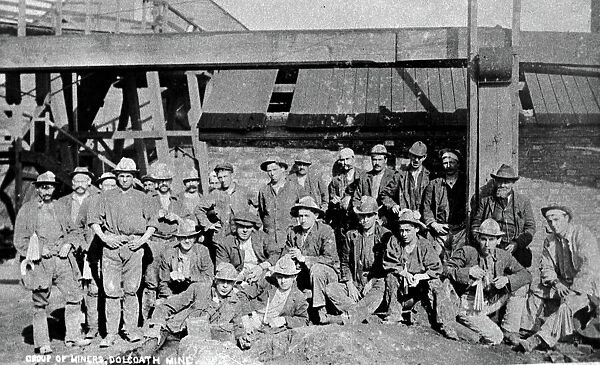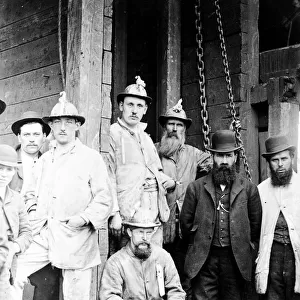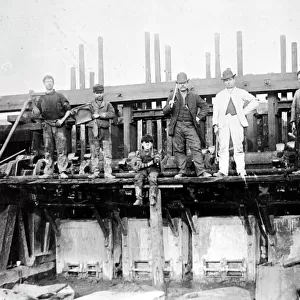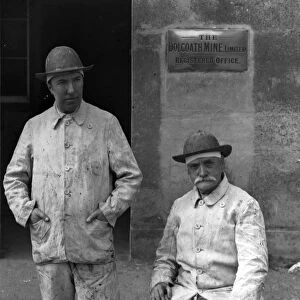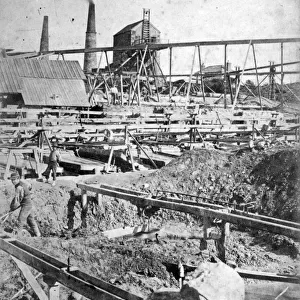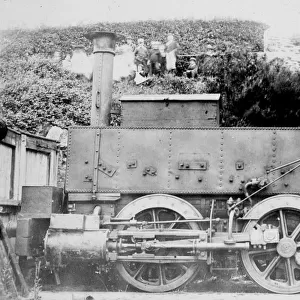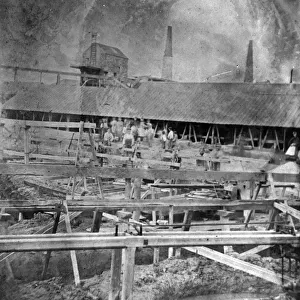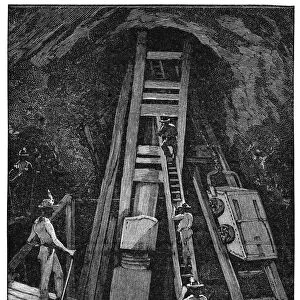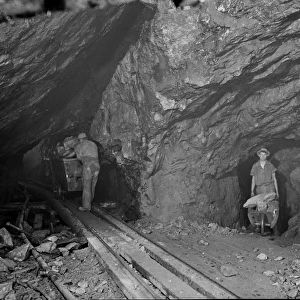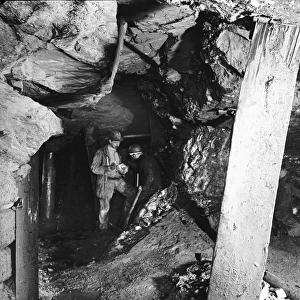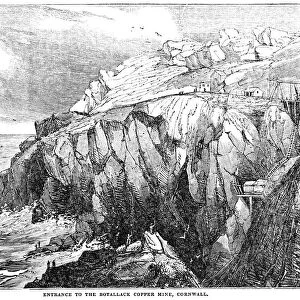Rights Managed > Royal Cornwall Museum > Mining > Camborne
Group of Miners, Dolcoath Mine, Camborne, Cornwall. Probably early 1900s
Filename: 668-15389307-2.jpg
Size: 9063 x 5516 (10.7MB)
Date: 7th September 2018
Source: Royal Cornwall Museum
County: Cornwall
Location Name: 50.21277, -5.294775
© From the collection of the RIC
![]()

Wall Art and Photo Gifts from Royal Cornwall Museum
Group of Miners, Dolcoath Mine, Camborne, Cornwall. Probably early 1900s
A group of miners at the surface. This photograph is probably taken somewhear near the dry or change house at Dolcoath, where the miners could wash and exchange their wet and dirty clothes for their surface clothes. It is taken prior to the men going underground, as they look clean and tidy, with some still wearing ordinary headgear. Also there are lots of candles in evidence that they will need underground. The older man on the right of the picture might be a Mine Captain. The earliest records of this mine show that it was being worked for copper in 1740, and probably earlier. It was nearly 300ft deep in 1746 and an extensive mine in 1778, when a section of its eastern part was published in Pryces Mineralogis Cornubiensis. It closed ten years later, to reopen in 1799. In the next 120 years it became the largest and deepest mine in Cornwall, with its bottom level 3, 000ft below the surface. Its output of copper and tin ores to 1788 is thought to have been no less than 1, 2500, 000, pounds, of which copper alone realised some 450, 000 between 1740 and 1777. Between 1799 and 1920 its output amounted to over 9 million pounds, including income from sales of arsenic, silver and other minerals. The mine was in the dividend list for most of its working life, and shares, nicknamed Dollies, were the blue chip of the industry. Photographer: Unknown
Royal Cornwall Museum is the UK's Greatest Museum For Cornish Life & Culture
TRURI : MIdol.73
Media ID 15389307
© From the collection of the RIC
EDITORS COMMENTS
This print captures a group of miners at Dolcoath Mine in Camborne, Cornwall, most likely taken in the early 1900s. The men stand proudly on the surface near the dry or change house, where they would prepare for their descent into the depths below. Their clean and tidy appearance suggests that this image was taken before they embarked on their arduous underground work. Notably, some miners still wear ordinary headgear while others showcase various types of protective headwear. Candles are scattered throughout the scene, serving as a reminder of the essential light sources needed in the dark tunnels beneath. A distinguished older man positioned on the right side of the photograph could possibly be identified as a Mine Captain overseeing operations. Dolcoath Mine has an extensive history dating back to at least 1740 when it was primarily worked for copper. It reached impressive depths over time, with its bottom level reaching an astonishing 3,000ft below ground. Throughout its existence, Dolcoath Mine proved to be one of Cornwall's largest and deepest mines. Its significant output included copper and tin ores valued at millions of pounds between 1740 and 1920. Shares in this prosperous mine were highly sought after by investors due to its consistent profitability. The photographer responsible for capturing this remarkable moment remains unknown but has left us with a powerful glimpse into Cornwall's rich mining heritage through this evocative image preserved by Royal Cornwall Museum.
MADE IN THE USA
Safe Shipping with 30 Day Money Back Guarantee
FREE PERSONALISATION*
We are proud to offer a range of customisation features including Personalised Captions, Color Filters and Picture Zoom Tools
SECURE PAYMENTS
We happily accept a wide range of payment options so you can pay for the things you need in the way that is most convenient for you
* Options may vary by product and licensing agreement. Zoomed Pictures can be adjusted in the Cart.

